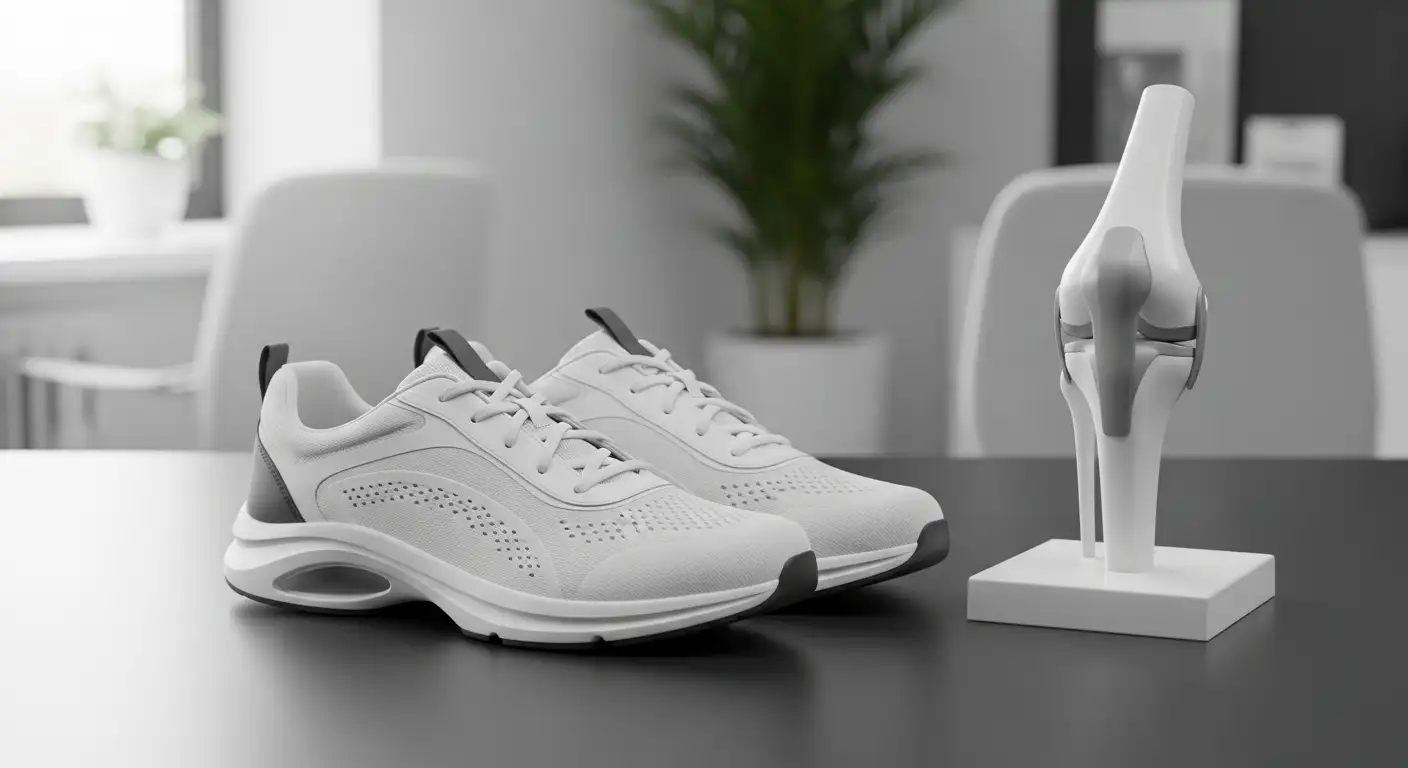Understanding Plasma Treatment
Plasma treatment, also known as Platelet-Rich Plasma (PRP) therapy, is emerging as a promising solution for individuals suffering from knee pain. This innovative form of treatment harnesses the healing power of the body's own cells to promote recovery and alleviate pain.
What is Plasma Treatment?
Plasma treatment, specifically PRP therapy, is a form of regenerative medicine that utilizes the natural growth factors found in blood cells to assist in the healing of damaged tissue, especially in tendons, ligaments, muscles, bones, and joints.
This treatment involves concentrating a person's own blood to increase the number of reparative cells the body produces, speeding up the natural healing process for injuries like minor rotator cuff and Achilles tendon tears, tendonitis, chronic tendinosis conditions, ligament injuries, muscle injuries, and particularly knee osteoarthritis.
PRP therapy for knee pain aims to help the body heal without surgery or invasive procedures. The growth factors in the platelets are believed to accelerate tissue repair and promote healing.

The Process of Plasma Treatment
The process of plasma treatment for knee pain involves taking a sample of the patient's own blood, which is then centrifuged to separate the platelets and plasma from other blood components. These platelets, rich in growth factors, are then injected into the knee joint [2].
This procedure is usually done in a doctor's office, and the entire process typically takes about 15 minutes [2].
In essence, plasma treatment leverages the body's own natural healing mechanisms to address knee pain. The process capitalizes on the power of platelets to facilitate tissue repair and promote healing, providing a non-surgical alternative for individuals suffering from knee pain.
Benefits of Plasma Treatment for Knee Pain
Plasma treatment, specifically platelet-rich plasma (PRP) therapy, is a form of regenerative medicine that utilizes the natural growth factors in blood cells to assist in the healing of damaged tissue, including tendons, ligaments, muscles, bones, and joints. This advanced treatment method is showing promising results for those dealing with knee pain.
Pain Relief and Improved Function
One of the primary benefits of plasma treatment for knee pain is the potential for pain relief and improved function of the knee joint. The growth factors in the platelets are believed to accelerate tissue repair and promote healing. As a result, many people experience significant relief from pain and improved functionality of the knee after PRP therapy [2]. However, it's important to note that results can vary from person to person, reflecting individual differences in healing responses.
Reduced Need for Surgery
By harnessing the body's own healing mechanisms, PRP therapy aims to help the body repair itself without the need for surgery or invasive procedures. This makes it an attractive option for individuals looking for alternatives to more conventional treatment methods such as knee replacement surgery or long-term medication use. PRP injections have also been shown to reduce the need for opioids and anti-inflammatory medications, thereby optimizing the initial inflammatory response required for healing [1].
Potential Long-Term Benefits
Recent data indicates that PRP treatment surpasses hyaluronic acid injections (viscosupplementation or "gel shots") for knee osteoarthritis, particularly regarding the duration of its positive effects. However, the combination of PRP with hyaluronic acid has shown superior efficacy compared to either treatment individually. This suggests that PRP treatment may offer long-term benefits for those dealing with knee osteoarthritis, a common cause of knee pain.
In summary, the benefits of plasma treatment for knee pain are promising, offering potential for both immediate and long-term relief. As research continues to evolve in this field, it's expected that the role of plasma treatment in managing knee pain will become increasingly significant.
Risks and Side Effects of Plasma Treatment
While plasma treatment for knee pain is generally considered to be safe, it is important to understand the potential risks and side effects associated with this treatment.
Potential Side Effects
PRP therapy for knee pain is considered safe overall, with few risks or side effects [3]. After intra-articular PRP injection, LR-PRP showed a significantly higher rate of swelling than LP-PRP.
Despite the low risk, the side effects of PRP injections can include:
- Pain at the injection site
- Increased swelling
- Infection
These side effects are minimal as the injections are derived from the patient's own blood, lowering the risk of rejection or negative reactions.
Variability in Treatment Effectiveness
One of the primary considerations with plasma treatment for knee pain is the variability in treatment effectiveness among individuals. This variability can be influenced by a range of factors, including the severity of the knee osteoarthritis, the patient's age, sex, and weight, and the specific type of PRP used (LR-PRP or LP-PRP).
It's important to note that while many patients experience significant relief from knee pain following plasma treatment, not all patients will have the same results. As with any treatment, it's essential to have a thorough discussion with your healthcare provider about the potential risks and benefits, as well as your individual health circumstances, to make an informed decision about whether plasma treatment is the right choice for you.
Factors Influencing Plasma Treatment Outcomes
While plasma treatment for knee pain has shown promising results in reducing pain and improving function, it's important to note that outcomes can vary significantly depending on several factors. These include the severity of the knee osteoarthritis, as well as the patient's age, sex, and weight.
Severity of Knee Osteoarthritis
The severity of knee osteoarthritis (OA) plays a crucial role in the effectiveness of plasma treatment. According to recent studies, patients with mild to moderate osteoarthritis (Kellgren-Lawrence grade 2 or 3) tend to experience the best relief from plasma treatment, with significant reductions in pain, stiffness, and improved function.
However, the effectiveness of the treatment decreases as the severity of the osteoarthritis increases. For instance, in a study, the overall responder rate was significantly lower in patients with severe knee osteoarthritis (KL4, 50.9%) than in those with mild (KL2, 75.2%) and moderate (KL3, 66.5%) knee osteoarthritis NCBI.
Furthermore, the same study revealed that the worsening of the knee osteoarthritis grade (increased KL grade) was a significant predictor of a worse clinical outcome. The relative risk for non-responders in severe (KL4) knee osteoarthritis was 2.1 to 2.3 times higher compared with mild-to-moderate (KL2-3) knee osteoarthritis NCBI.
Patient's Age, Sex, and Weight
Contrary to what one might expect, patient demographics such as age, sex, and weight don't appear to significantly impact the outcomes of plasma treatment for knee pain. A study found that the effectiveness of platelet-rich plasma therapy for the treatment of knee osteoarthritis was not influenced by these factors NCBI.
However, it's important to note that while these factors might not directly affect the effectiveness of the treatment, they can still influence the overall health and well-being of the patient, which could indirectly impact the outcomes of the treatment.
Overall, while plasma treatment for knee pain can be a viable option for many, the outcomes can vary significantly depending on the individual patient's circumstances. As such, it's important to have a thorough discussion with your healthcare provider to understand if this treatment is the right choice for you.
PRP vs. Other Treatments
When it comes to managing knee pain, especially in cases of osteoarthritis (OA), there are several treatment options available. Among them, plasma treatment, more specifically platelet-rich plasma (PRP) injections, are gaining popularity. However, it's crucial to understand how PRP compares to other treatments in terms of efficacy and outcomes.
PRP vs. Hyaluronic Acid Injections
Hyaluronic acid injections, also known as viscosupplementation or "gel shots", have been a standard treatment option for knee osteoarthritis. However, recent data indicates that PRP treatment surpasses hyaluronic acid injections, particularly regarding the duration of its positive effects [1].
Three main double-blind randomized control trials (RCTs) have demonstrated a benefit in pain, stiffness, and physical function of the knee for patients receiving PRP injections compared to controls of normal saline or hyaluronic acid. These trials showed the best relief in patients with mild to moderate osteoarthritis (Kellgren-Lawrence grade 2 or 3) [4].
PRP in Combination with Other Treatments
While PRP injections have shown promising results alone, the combination of PRP with other treatments can potentially enhance the efficacy. Specifically, the combination of PRP with hyaluronic acid has shown superior efficacy compared to either treatment individually.
This suggests that a multimodal approach might be beneficial for managing knee pain, especially in more severe cases of osteoarthritis. However, more research is needed to determine the best combinations of treatments and to establish standardized protocols for their use.
To summarize, PRP injections, either alone or in combination with other treatments like hyaluronic acid injections, can be a beneficial treatment option for knee pain due to osteoarthritis. It's essential for patients to discuss these options with their healthcare provider to determine the most suitable treatment plan based on their individual needs, severity of symptoms, and overall health condition.
Future Research and Considerations
As plasma treatment for knee pain continues to evolve and gain acceptance in the medical community, it's vital to acknowledge the current limitations in research and consider the future of this promising therapeutic approach.
Current Limitations in Research
While there are numerous studies and trials suggesting the benefits of platelet-rich plasma injections (PRP) for knee pain, particularly in cases of mild to moderate osteoarthritis (OA), it is essential to note that there is limited level-one literature supporting this practice and offering conclusive benefits.
For instance, a study investigating the outcomes of patients who received PRP injections over a six to eight-week period showed a reduction in the Western Ontario and McMaster Universities arthritis index (WOMAC) score, pain, stiffness, and physical function. However, all scores returned close to baseline at the six-week follow-up post-treatment, indicating a possible placebo effect.
Another point to consider is the variability in treatment effectiveness. While some patients experience significant relief from PRP injections, others may not notice a substantial difference. There is a need for further studies to explore whether factors like the grade of osteoarthritis and the patient's weight significantly impact treatment outcomes.
The Future of Plasma Treatments for Knee Pain
Despite the current limitations in research, the future of plasma treatments for knee pain remains promising. Preliminary findings suggest that PRP treatment could potentially surpass traditional treatments like hyaluronic acid injections in terms of the duration of its positive effects [1].
Moreover, research indicates that combining PRP with other treatments, such as hyaluronic acid, may enhance the efficacy of the treatment compared to using either treatment individually.
As the understanding of plasma treatment continues to evolve, future research may focus on optimizing the treatment protocol, including the number of injections, the concentration of platelets, and the timing of treatment. Additionally, studies may also explore the use of plasma treatment for other conditions, potentially broadening the scope of this innovative approach.
While the road to fully understanding and optimizing plasma treatment for knee pain may still be long, the journey is filled with promising possibilities that may significantly impact how knee pain is managed in the future.
References
[1]: https://www.hss.edu/condition-list_prp-injections.asp
[2]: https://www.webmd.com/osteoarthritis/what-to-know-about-platelet-rich-plasma-prp-treatment





